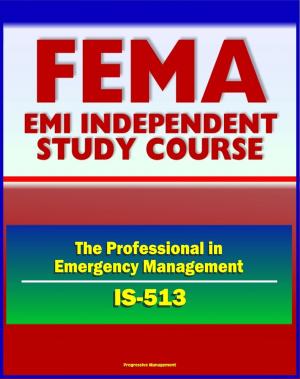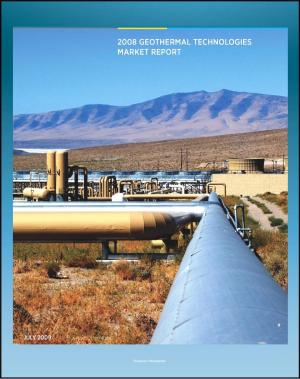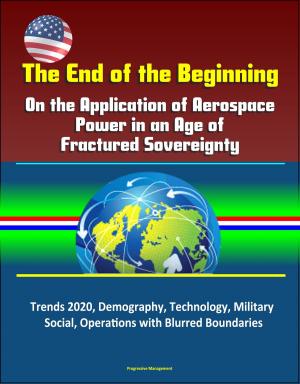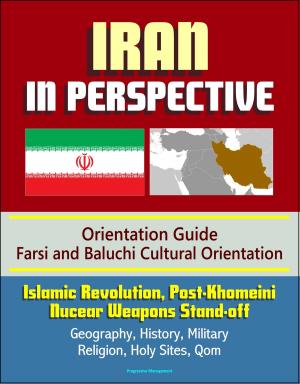21st Century Essential Guide to South and East China Sea Territorial Disputes Involving China and Japan - Senkaku (Diaoyu) Islands, Oil and Hydrocarbon Resources, East Asia and Pacific Disputes
Nonfiction, Social & Cultural Studies, Political Science, Politics, Economic Policy, International| Author: | Progressive Management | ISBN: | 9781476301822 |
| Publisher: | Progressive Management | Publication: | August 21, 2012 |
| Imprint: | Smashwords Edition | Language: | English |
| Author: | Progressive Management |
| ISBN: | 9781476301822 |
| Publisher: | Progressive Management |
| Publication: | August 21, 2012 |
| Imprint: | Smashwords Edition |
| Language: | English |
This essential compilation of expert opinion from U.S. government reports and papers provides unique and up-to-date information about the ongoing territorial disputes over the South China Sea and East China Sea, including confrontations between China and Japan over the Senkaku (Diaoyu) Islands. Professional analysis and background data on important regional issues covers all aspects of the disputes, including estimates of oil and hydrocarbon resources in the region, and American foreign policy efforts regarding the issue. Supplementing the presentation is additional material about relevant Chinese and Japanese issues.
China claims the waters and islands in the South China Seas including the Paracel Islands also claimed by Vietnam, and the Spratly Islands, claimed in total or in part by the other littoral states. China disputes Japan’s claims to the Senkaku Islands (Diaoyutai Qundao), a group of uninhabited islands in the East China Sea.
Areas of the East China Sea are abundant in oil and natural gas deposits, which has resulted in tension between China and Japan as both seek to claim the resources for themselves. Taiwan's claim parallels China's, but Taiwan has not actively pursued the resources. According to EIA estimates, China's oil consumption will increase 3.8 percent annually through 2030, to roughly 15 million barrels per day. Japan's interest reflects the fact that Japan has virtually no domestic oil or gas reserves and is heavily dependent upon imports for its oil and gas needs. Japan is expected to consume 5 million barrels per day by 2030.
The East China Sea is an area of 480,000 square miles to the east of China, north of Taiwan, west of Japan's Ryuku islands, and south of South Korea. The eight Daioyu/Senkaku (Chinese name/Japanese name) Islands are to the northeast of Taiwan, the largest island is two miles long and less than a mile wide. Though incapable of sustaining life, the islands are important for strategic and political reasons, as claims of ownership are used to bolster claims to the surrounding sea and its resources.
The United Nations Convention on the Law of the Sea (UNCLOS) has not yet resolved ownership disputes in the East China Sea. The 1982 convention created a number of guidelines concerning the status of islands, continental shelves, exclusive economic zones (EEZ), enclosed seas, and territorial limits. UNCLOS states that countries with overlapping claims must resolve them by good faith negotiation.
This essential compilation of expert opinion from U.S. government reports and papers provides unique and up-to-date information about the ongoing territorial disputes over the South China Sea and East China Sea, including confrontations between China and Japan over the Senkaku (Diaoyu) Islands. Professional analysis and background data on important regional issues covers all aspects of the disputes, including estimates of oil and hydrocarbon resources in the region, and American foreign policy efforts regarding the issue. Supplementing the presentation is additional material about relevant Chinese and Japanese issues.
China claims the waters and islands in the South China Seas including the Paracel Islands also claimed by Vietnam, and the Spratly Islands, claimed in total or in part by the other littoral states. China disputes Japan’s claims to the Senkaku Islands (Diaoyutai Qundao), a group of uninhabited islands in the East China Sea.
Areas of the East China Sea are abundant in oil and natural gas deposits, which has resulted in tension between China and Japan as both seek to claim the resources for themselves. Taiwan's claim parallels China's, but Taiwan has not actively pursued the resources. According to EIA estimates, China's oil consumption will increase 3.8 percent annually through 2030, to roughly 15 million barrels per day. Japan's interest reflects the fact that Japan has virtually no domestic oil or gas reserves and is heavily dependent upon imports for its oil and gas needs. Japan is expected to consume 5 million barrels per day by 2030.
The East China Sea is an area of 480,000 square miles to the east of China, north of Taiwan, west of Japan's Ryuku islands, and south of South Korea. The eight Daioyu/Senkaku (Chinese name/Japanese name) Islands are to the northeast of Taiwan, the largest island is two miles long and less than a mile wide. Though incapable of sustaining life, the islands are important for strategic and political reasons, as claims of ownership are used to bolster claims to the surrounding sea and its resources.
The United Nations Convention on the Law of the Sea (UNCLOS) has not yet resolved ownership disputes in the East China Sea. The 1982 convention created a number of guidelines concerning the status of islands, continental shelves, exclusive economic zones (EEZ), enclosed seas, and territorial limits. UNCLOS states that countries with overlapping claims must resolve them by good faith negotiation.















